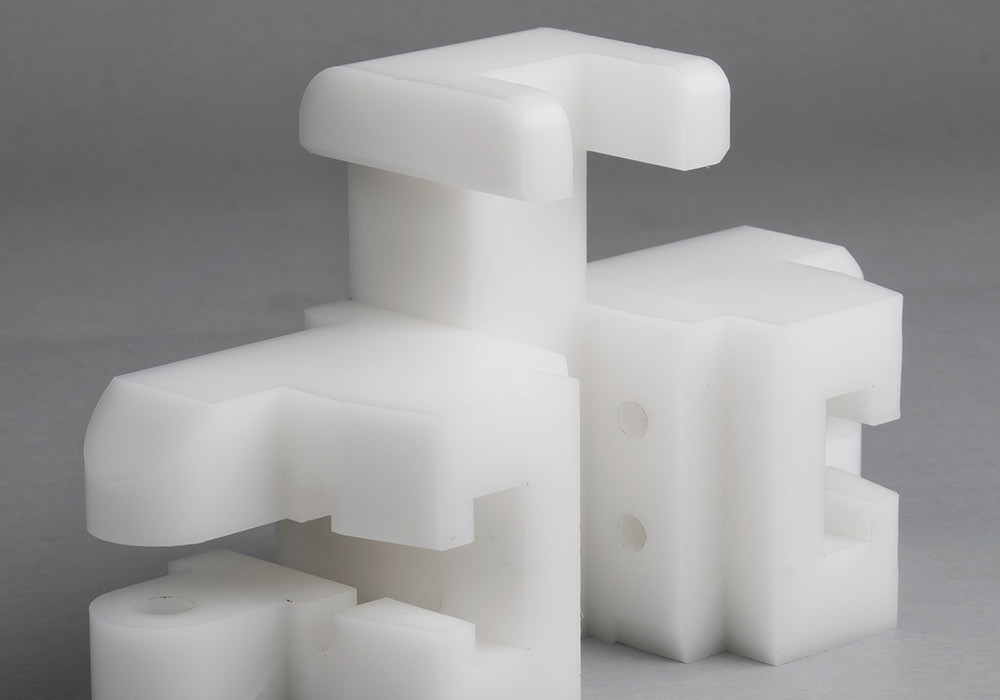ABS (acrylonitrile butadiene styrene) is a popular plastic material with excellent material performance combinations. This thermoplastic polymer not only exhibits good heat resistance, electrical and chemical resistance, high impact strength, and toughness based on additives that introduce its chemical composition, but also exhibits various customizable properties. ABS can be used for applications that require sturdy and stable plastics with moderate formability. This article discusses the advantages, challenges, and precautions of ABS CNC machining.
The advantages of ABS CNC machining
CNC machining of ABS plastic has several advantages, making it a widely accepted choice in various industries. Here are some expected benefits:
This is an economical and efficient method for producing ABS parts with complex geometric shapes and strict tolerances, as there is no need to create molds when CNC machining ABS plastic.
The CNC machining of ABS plastic enables it to maintain its mechanical properties, such as high toughness and tensile strength.
Manufacturers can use CNC machining technology to deliver ABS prototypes and end-use parts to customers more quickly.
The cost-effectiveness of ABS CNC machining makes it very suitable for producing medium to low volume ABS parts.
ABS CNC machining enables manufacturers to produce precision plastic components with complex geometries and designs.

Common challenges in ABS CNC machining
Although ABS plastic has a wide range of advantages, mechanics may encounter some setbacks during the processing. Some challenges of ABS CNC machining include:
ABS CNC machining requires special tools and professional knowledge to manufacture high-quality precision machined parts.
ABS parts processed by CNC machining are often susceptible to machining defects, such as poor surface finish and deformation.
Scratches or lines generated by CNC machine tools may cause ABS parts to leak or make transparent ABS parts appear foggy.
In CNC machining, incorrect cutting parameters, cutting tools, and extreme heat accumulation often affect the surface quality of ABS plastics.
Due to the high thermal expansion experienced by ABS plastic when heated, excess material can be removed, which becomes evident when the workpiece cools and shrinks.
ABS plastic, due to its relatively low thermal conductivity and thermal deflection temperature range, will experience higher heat accumulation in the cutting area. Therefore, the material is prone to softening and deformation.
CNC machining tips for working with ABS
Tool Selection:
Use sharp cutting tools with high-speed steel (HSS) or carbide inserts designed for plastics machining.
Consider using single-flute or two-flute end mills for better chip evacuation and reduced heat generation.
Diamond-coated tools can also be effective for extended tool life when machining ABS.
Cutting Parameters:
Optimize cutting speeds and feed rates to prevent melting and minimize tool wear. Higher cutting speeds and lower feed rates are generally preferred for ABS.
Maintain proper chip evacuation to prevent re-cutting of chips, which can cause heat buildup and poor surface finish.
Use coolant or compressed air to cool the tool and workpiece during machining, especially for high-speed cutting operations.
Clamping and Workholding:
Use low clamping pressures to avoid deformation or distortion of the ABS workpiece.
Consider using vacuum chucks or soft jaws to securely hold the workpiece without causing surface damage.
Machining Techniques:
Employ climb milling instead of conventional milling to reduce tool deflection and achieve better surface finish.
Use peck drilling techniques for drilling operations to prevent chip buildup and ensure hole accuracy.
Consider pre-drilling pilot holes for threading operations to minimize stress and reduce the risk of thread deformation.
Surface Finish:
To achieve a smooth surface finish, consider using finishing passes with reduced cutting depths and higher speeds.
Use cutting tools with polished or coated surfaces to minimize friction and improve surface quality.
Consider post-processing techniques such as sanding, polishing, or vapor smoothing to further enhance the appearance of machined ABS parts.
Tool Path Optimization:
Optimize tool paths to minimize tool engagement and reduce machining forces, which can help prevent part distortion and improve dimensional accuracy.
Use CAM software with adaptive toolpath strategies to dynamically adjust cutting parameters based on the material properties and geometry of the part.
Workpiece Support:
Provide adequate support for thin-walled or delicate ABS parts to prevent vibration, chatter, or deflection during machining.
Use sacrificial tabs or support structures as needed to hold the workpiece securely in place and prevent warping or distortion.
ABS parts processed by CNC machining are widely used in different industries due to their excellent impact strength, stiffness, and toughness. However, understanding the basic knowledge of ABS CNC machining is crucial for ensuring the required results and preventing complications.
By following these CNC machining tips, you can achieve high-quality results when machining ABS materials, ensuring precise dimensional accuracy, excellent surface finish, and efficient chip removal.



